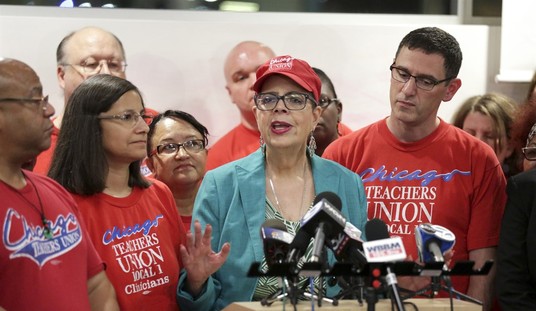This month, the state of Israel held its 3rd election in less than a year due to a handful of small parties failing to form a majority coalition. Meanwhile, in the U.S., pundits hysterically argue that a two-party political system divides and furthers polarization. In reality, the American system avoids much of the more extreme polarization and division often seen in other systems around the world.
Like Israel, many European countries use some form of a proportional election system that almost always results in many different small parties entering parliament. Israel has 6 parties in parliament — a lot of them receiving less than 8% in the last election. The same goes for much of Europe: Italy and Spain have more than a dozen parties in each legislature, many with nothing more than a single seat.
On the other side of the Atlantic, critics claim the two-party political system has failed Americans. One Foreign Policy opinion writer makes the case for letting "a thousand parties bloom" to end the political divide in the U.S. Like many others, he essentially argues that Republicans and Democrats only compete in swing districts and therefore these parties just appeal to a small number of swing voters.
But that argument misses a crucial point: Under the American system, each candidate needs broad public support in the district to receive a majority or at least a plurality of the vote. Without that, he would not be able to compete, whether it's a swing district or not.
In a proportional system, parties appeal to a much smaller segment of the population. Those minor parties can gain a substantial number of seats in parliament even though they may have never won a majority of the votes in any district. So it’s not unusual for many lawmakers to hold positions not supported by even a single constituency in the whole country. Doesn’t that sound more polarizing?
In Germany, every party with more than 5% of the national popular vote gets a seat at the table. Many other European countries have an even lower threshold. Of course, this elevates marginal and sometimes extreme parties. In fact, those minor parties often get outsized power in European-style proportional parliamentary systems due to their ability to play an important role in forming government coalitions. In those coalitions, they can effectively dictate policies on certain key issues, even though they mostly haven't received more than 10% of the national vote.
Recommended
In Israel, the reason there have been 3 elections in less than a year is the dispute between the former coalition partners of the large conservative Likud party of Prime Minister Netanyahu and the smaller right-wing Yisrael Beiteinu of former Defense Minister Avigdor Lieberman. Lieberman's party has been widely seen as a kingmaker and the staunch opposition to his conscription demands by several religious parties in the Likud-led coalition has led to the two snap elections.
Party leaders, not voters, become kingmakers under the proportional system. This is also true for selecting the candidates themselves. There are different systems in use throughout Europe, but generally, party leaders play the principal role in deciding which candidates are nominated on their party list. There is nothing comparable to an American-style primary election.
The dominance of parties also influences political debate. In a system with many parties, voters are much more expected to agree with their party’s leadership stance — as there are more parties they can choose — even if they don't represent their every position.
Under a two-party system, there is much more room for a lively debate inside the party. This isn't to say there is no debate in European-style parties — there is — but it is not a public debate. For the sake of party unity, too often these debates are done behind closed doors and decided not by the base but by party officials.
The two-party system allows for a large and diverse range of opinions in each party. After all, America isn't divided on major political issues because both parties disagree, but because large swaths of the population do. These major parties don't represent tiny segments of the population with sometimes radical views, which is often the case in proportional systems. Rather they represent an America that is shaped by different regions with their distinct broadly-accepted values.
The answer to polarization in the U.S. is simple: Local self-government and federalism — ideas deeply rooted in the American republic.
Sebastian Thormann is a contributor to Lone Conservative and a student at the University of Passau, Germany.
























Join the conversation as a VIP Member